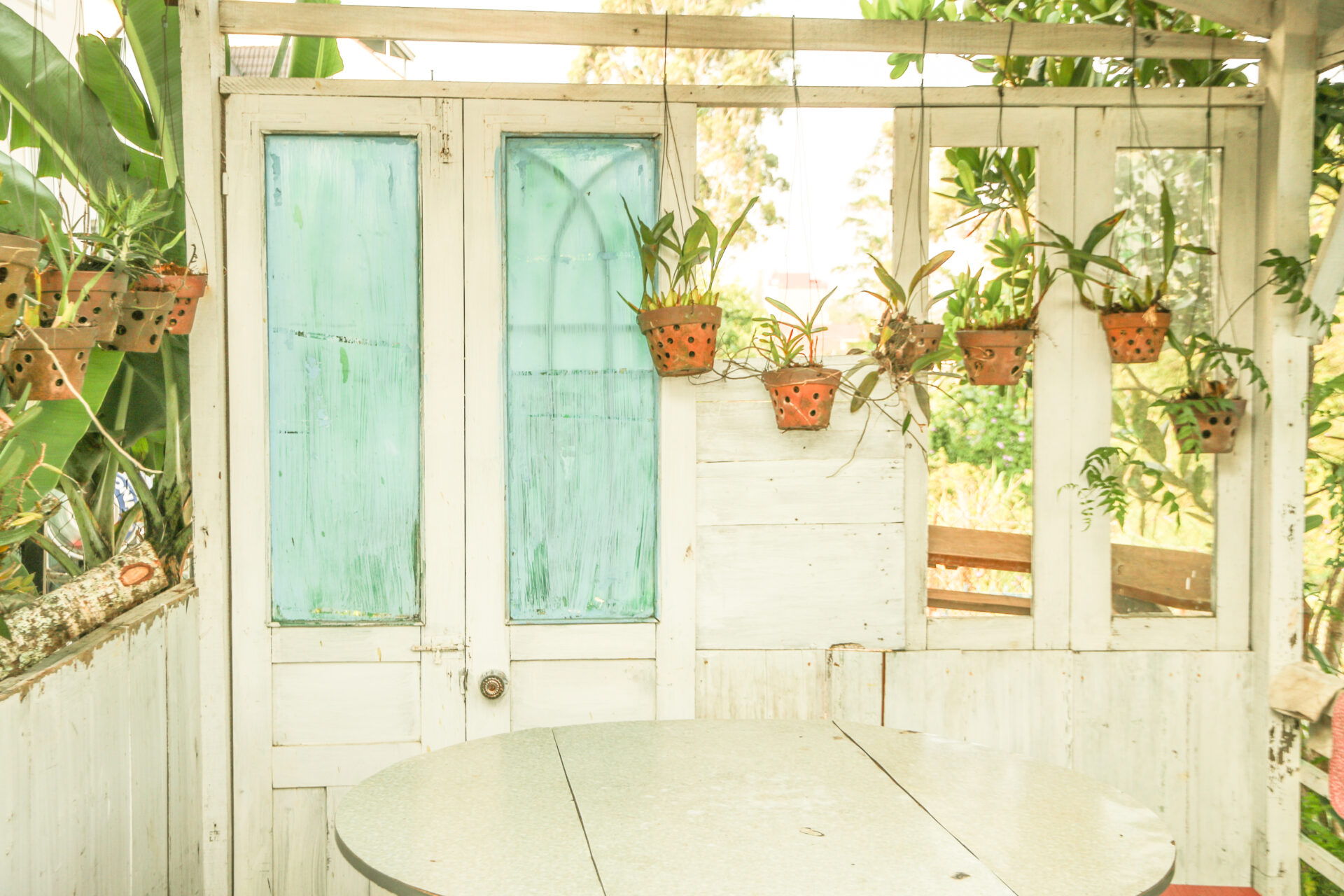As we look towards the future, sustainable living is gaining momentum as people pursue an eco-friendly lifestyle. One aspect that stands out in this endeavor is Indoor Vertical Gardening. Vertical Gardening is an innovative approach to urban agriculture that maximizes space utilization and resource efficiency.
This article will delve into Indoor Vertical Gardening, exploring its benefits and potential role in shaping a sustainable future. We will discuss its fundamental principles, the technology involved, and how it can lead to better food security and environmental conservation. Join us as we embark on this journey to learn about the immense potential and transformative power of Indoor Vertical Gardening in fostering a greener and more sustainable way of life.
Designing Your Indoor Vertical Garden at Home
Imagine turning a dull corner of your living space into a lush, green oasis, teeming with life and purifying the air you breathe. With indoor vertical Gardening, this vision can become a reality. This subsection will provide a step-by-step guide to designing your indoor vertical garden. We will include the essential elements and considerations to make your project successful. We will also explore creative ways to utilize climbing plants in your vertical garden, focusing on the article, How to Create an Indoor Vertical Garden with Climbing Plants.
Step 1: Choose the Location and Structure
The first step in designing your indoor vertical garden is to choose the perfect location. Consider factors such as available space, natural light, and proximity to water sources when making your decision. Once you’ve found the ideal spot, decide on the structure that best fits your needs. Options range from pre-built vertical garden systems to DIY structures like repurposed pallets or hanging planters. Whatever your choice, make sure it is sturdy and durable and able to hold the weight of your plants and soil.
Step 2: Select Your Plants Wisely
When selecting plants for your indoor vertical garden, consider factors such as light requirements, growth habits, and compatibility with your chosen structure. Opt for plants with similar light and water requirements to ensure they thrive in the same environment. Don’t forget to explore the world of climbing plants, as they can add an extra layer of visual interest and vertical growth to your garden.
Step 3: Create a Healthy Growing Environment
Ensuring a healthy growing environment is crucial for the success of your indoor vertical garden. Start by choosing a high-quality potting mix that gives your plants nutrients and drainage. Additionally, invest in proper irrigation systems to maintain consistent moisture levels. Automated drip irrigation systems are famous for vertical gardens, delivering water directly to the roots with minimal waste.
Step 4: Provide Adequate Light and Air Circulation
Light is essential for plant growth, and indoor vertical gardens may require supplemental lighting, especially during winter. Research the light requirements of your chosen plants and invest in suitable grow lights if necessary. Additionally, ensure that your garden has adequate air circulation to prevent the buildup of humidity and mold or mildew growth.
Step 5: Regular Maintenance and Care
Lastly, regular maintenance and care are crucial in keeping your indoor vertical garden healthy and thriving. Prune your plants regularly to encourage bushier growth and prevent overcrowding. Monitor the health of your plants and promptly address any signs of pests or diseases. With consistent care, your indoor vertical garden will flourish, providing you with fresh produce, improved air quality, and a beautiful, green living space.
By following these steps and incorporating the right climbing plants, your indoor vertical garden will not only be a stunning addition to your home but also a testament to the power of sustainable living. Embrace the future of urban agriculture and transform your living space into a thriving, eco-friendly oasis.
Benefits of Indoor Vertical Gardening for Urban Spaces
As urban populations expand and the demand for fresh, locally grown produce rises, Indoor Vertical Gardening emerges as a promising solution to many city dwellers’ challenges. In this subsection, we will delve into the various benefits of incorporating Indoor Vertical Gardening in urban spaces, exploring how it can help address issues such as food security, pollution, and limited green spaces.
Maximizing Space Utilization and Increasing Food Production
Space is a significant constraint in urban areas, with limited room for traditional agriculture. Indoor Vertical Gardening offers an innovative solution that allows plants to grow vertically and efficiently using limited space. This approach increases food production per square foot, contributing to the goal of food security within cities.
Reducing Food Miles and Carbon Footprint
Transporting produce from rural farms to urban markets contributes to greenhouse gas emissions and the overall carbon footprint of our food system. Indoor Vertical Gardens, located within or close to urban areas, can significantly reduce food miles and lower the environmental impact of food transportation. This reduction in emissions contributes to cleaner air and a healthier urban environment.
Improving Air Quality and Reducing Pollution
Indoor Vertical Gardens contribute to reducing emissions from food transportation and actively purifying the air. Plants absorb carbon dioxide and release oxygen, and many species effectively filter harmful pollutants such as benzene, formaldehyde, and trichloroethylene. By incorporating Indoor Vertical Gardens into urban spaces, we can help improve air quality and create healthier living environments for city dwellers.
Enhancing Aesthetics and Providing Mental Health Benefits
The presence of green spaces and plants has been shown to improve mental health and well-being. Indoor Vertical Gardens bring nature into urban spaces, offering an aesthetic appeal and providing city dwellers with much-needed access to greenery. In addition, tending to a garden can be therapeutic and stress-relieving, further enhancing the mental health benefits of this innovative approach to urban agriculture.
Encouraging Local Economies and Community Engagement
Indoor Vertical Gardening can contribute to local economies by creating job opportunities in urban agriculture and fostering community engagement. By supporting local food production, we can encourage more sustainable consumption patterns and help build resilient communities that prioritize the well-being of people and the environment.
These benefits showcase the immense potential of Indoor Vertical Gardening to transform urban spaces and promote sustainable living. By embracing this innovative approach, we can work towards a future in which urban areas are characterized by thriving green spaces, healthy and happy residents, and a strong commitment to environmental stewardship.
Innovative Technologies in Vertical Garden Systems
As Indoor Vertical Gardening continues to gain traction in urban spaces, innovative technologies have emerged to make these systems more efficient, sustainable, and accessible to a broader audience. In this subsection, we will explore some of the cutting-edge technologies that have revolutionized the world of vertical garden systems, paving the way for a more sustainable future.
Hydroponics and Aeroponics: Soil-less Growing Systems
Hydroponics and aeroponics are two soil-less growing systems that have significantly impacted the efficiency of vertical garden systems. Aeroponics relies on suspending plant roots in the air and misting them with nutrient-laden water. Meanwhile, Hydroponics involves growing plants in nutrient-rich water solutions. Both methods eliminate the need for soil, reducing the weight of vertical garden systems and allowing for easier maintenance. Moreover, they offer more precise control over nutrient levels, enabling faster plant growth and higher yields.
Automated Irrigation and Nutrient Delivery
Integrating automated irrigation and nutrient delivery systems into vertical garden setups has streamlined maintenance and improved resource efficiency. These systems can be programmed to deliver water and nutrients directly to plant roots at optimal intervals, ensuring that plants receive the necessary resources without waste. As a result, vertical garden systems can conserve water and reduce the ecological footprint of urban agriculture.
Smart Lighting Solutions
Innovative lighting solutions play a critical role in the success of indoor vertical gardens, particularly in urban spaces with limited natural light. The development of energy-efficient LED grow lights, which emit specific wavelengths of light to promote photosynthesis, has revolutionized indoor Gardening. These innovative lighting solutions can be tailored to the needs of particular plant species, ensuring that they receive the optimal amount of light for growth without consuming excess energy.
Vertical Garden Monitoring and Control Systems
Modern vertical garden systems have advanced monitoring and control systems that allow gardeners to track essential environmental variables such as temperature, humidity, and nutrient levels. These systems can provide real-time insights and recommendations on optimizing growing conditions by utilizing sensors and data analytics. This data-driven approach to indoor vertical Gardening empowers gardeners to make informed decisions, ultimately improving their gardens’ overall health and productivity.
Modular and Scalable Vertical Garden Designs
In response to urban dwellers’ diverse needs and preferences, vertical garden systems have evolved to become more modular and scalable. This flexibility allows gardeners to customize their setups and expand or modify them. Modular designs also make vertical garden systems more accessible to a broader audience, providing options for various budgets and space constraints.
Integrating these innovative technologies into vertical garden systems has transformed the landscape of urban agriculture, making it more efficient, sustainable, and accessible than ever before. By harnessing the power of these cutting-edge advancements, we can continue to push the boundaries of indoor vertical Gardening and foster a more eco-friendly future for urban spaces.
Environmental Advantages of Indoor Vertical Agriculture
Indoor Vertical Gardening is not only a game-changer in urban agriculture and space utilization, but it also offers numerous environmental advantages that contribute to a more sustainable future. In this subsection, we will delve into the various ecological benefits of Indoor Vertical Gardening, exploring how this innovative approach can help mitigate some of the most pressing environmental concerns of our time.
Conservation of Water Resources
One of Indoor Vertical Agriculture’s most significant environmental advantages is its ability to conserve water resources. Traditional agriculture is notoriously water-intensive, accounting for approximately 70% of global freshwater consumption. In contrast, Indoor Vertical Gardening systems, particularly those employing hydroponics or aeroponics, can use up to 90% less water than conventional methods. This reduction in water usage can help alleviate pressure on our increasingly scarce water resources.
Reduced Land and Soil Degradation
As the global population continues to grow, the demand for arable land has led to widespread deforestation and soil degradation. Indoor Vertical Gardening offers a viable alternative for food production without the need for extensive land clearances. Growing plants vertically in controlled environments can significantly reduce the strain on our planet’s limited arable land and prevent further soil depletion.
Lower Pesticide Use and Improved Biodiversity
Indoor Vertical Agriculture allows for the precise control of environmental conditions, which can significantly reduce the need for pesticides. With fewer pests and diseases to contend with, vertical gardens can rely on more natural pest control methods, reducing the need for harmful synthetic chemicals. This results in healthier, safer produce and helps protect local ecosystems and preserve biodiversity.
Energy Efficiency and Renewable Energy Integration
Although Indoor Vertical Gardening systems require energy, many have been designed to maximize energy efficiency. LED grow lights, for example, consume far less energy than traditional lighting systems while providing optimal conditions for plant growth. Furthermore, vertical gardens can be integrated with renewable energy sources such as solar panels or wind turbines, reducing their environmental impact and promoting clean energy solutions.
Carbon Sequestration and Climate Change Mitigation
Indoor Vertical Gardening can mitigate climate change by capturing and storing carbon dioxide through a process known as carbon sequestration. As plants grow, they absorb carbon dioxide from the atmosphere and convert it into biomass. By incorporating more plants in urban environments, Indoor Vertical Gardening can contribute to reducing greenhouse gas concentrations and helping combat the negative effects of climate change.
The numerous environmental advantages of Indoor Vertical Agriculture demonstrate the potential of this innovative approach to contribute significantly to a more sustainable future. By embracing Indoor Vertical Gardening, we can work towards addressing some of the most pressing ecological challenges and pave the way for a greener, healthier, and more resilient planet.
Maximizing Crop Yield with Vertical Farming Techniques
As the world grapples with the challenges of feeding a growing population with limited resources, Indoor Vertical Gardening offers innovative solutions to maximize crop yield and promote sustainable living. By employing advanced vertical farming techniques, plant growth can be optimized, and higher productivity levels within a smaller footprint can be achieved. In this subsection, we will delve into the various strategies and practices that can help maximize crop yield in vertical farming systems, ultimately contributing to the future of sustainable living.
Optimizing Plant Spacing and Growth Patterns
One key aspect of maximizing crop yield in vertical farming systems involves optimizing plant spacing and growth patterns. By carefully planning the arrangement of plants within a vertical garden, it is possible to ensure that every plant receives adequate light, air, and nutrients. This can be achieved through strategic positioning, such as staggering plants at different heights or utilizing trellises and supports to guide climbing plants. This careful planning not only maximizes the use of space but also encourages healthier, more productive growth.
Investing in Advanced Horticultural Techniques
The application of advanced horticultural techniques plays a vital role in maximizing crop yield in Indoor Vertical Gardening systems. Pruning, training, and grafting can significantly enhance plant growth and productivity. By carefully manipulating plant growth through these techniques, gardeners can encourage more efficient resource use, boost yields, and prevent overcrowding or resource competition.
Implementing Precision Agriculture Practices
Precision agriculture practices involve using technology to collect and analyze data on plant health, growth conditions, and resource use. By leveraging this data, it is possible to make informed decisions on optimizing plant growth and maximizing crop yield in vertical farming systems. For instance, data on nutrient levels can be used to develop customized nutrient solutions, while information on light exposure can help optimize lighting schedules. This data-driven approach enables gardeners to fine-tune their vertical farming systems, leading to higher productivity and better resource management.
Selecting High-Yielding and Compatible Plant Varieties
The choice of plant varieties can significantly impact the overall productivity of an indoor vertical garden. Gardeners can ensure that their vertical farming systems achieve maximum output by selecting high-yielding and compatible plant varieties. Factors such as growth habits, resource requirements, and resistance to pests and diseases must be considered when selecting plants for a vertical garden. By choosing varieties well-suited to the specific conditions of the vertical farming system, it is possible to maximize crop yield and contribute to a more sustainable future.
Continuous Monitoring and Adaptive Management
Continuous monitoring and adaptive management are crucial to maximizing crop yield in indoor vertical gardening systems. This entails regularly assessing plant health, growth conditions, and resource use and making necessary adjustments to optimize productivity. By being proactive and responsive to changing conditions, gardeners can ensure that their vertical farming systems remain productive and efficient over time.
Adopting these strategies and practices makes maximizing crop yield in vertical farming systems possible. This paves the way for a more sustainable and resource-efficient future. Indoor Vertical Gardening has the potential to revolutionize the way we produce food. Contributing significantly to the future of sustainable living and providing a viable solution to the challenges of feeding a growing global population.







Leave a reply